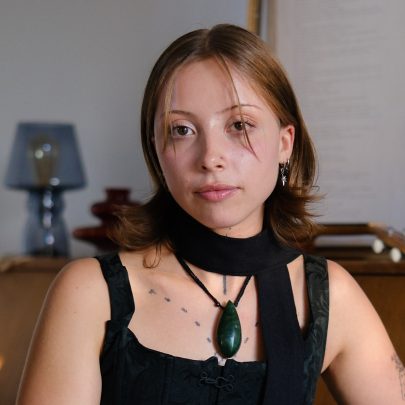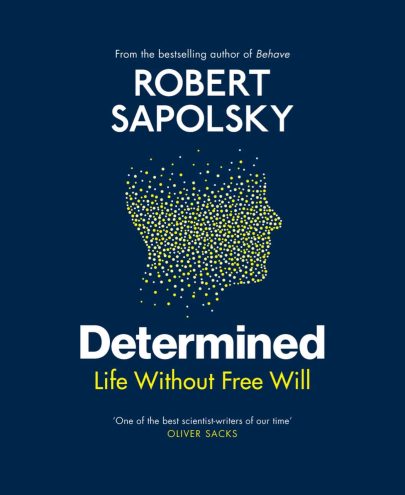Sep 18, 2024 Arts
Funding decisions by government bodies aren’t usually a public talking point. When they become one, it tends to be because a government department has made an easy-to-ridicule spending choice or plans to push a cultural sacred cow under the sword of Damocles. But in 2021, a funding decision made by the Ministry for Culture and Heritage (MCH) raised the eyebrows of more than a few in the literary community.
That year, among many funds and schemes that the government had introduced to inject money into sectors in dire straits, MCH was administering the Cultural Sector Innovation Fund, part of a $374 million Covid-19 recovery programme to support the “sustainability and resilience” of the arts and culture industry.
One of the organisations awarded funding was Narrative Muse, a company founded in 2016 by Brough Johnson and Teresa Bass, which aims to match users with stories from “underrepresented communities” across books, TV and movies. In the company’s application for funding, the posters for local TV shows Sis, Creamerie and Rūrangi were included in a carousel alongside the book covers for Becky Manawatu’s Auē and Hinemoa Elder’s Aroha.
The funding panel that approved the grant said it “saw an opportunity to develop audiences for diverse content and to influence producers and presenters to publish diverse content”. Other organisations funded in this round included the trust that runs the Aotearoa New Zealand Festival of the Arts (for a new “values-driven” ticketing platform), Te Wharetoi ō Ngāti Toa (for an iwi-based creative hub in Porirua) and Wellbeing Unlocked (a suite of tools for arts and culture organisations to measure their wellbeing impact). Over $86 million was requested, with $6.7 million being awarded. Half a million dollars of that went to Narrative Muse.
After the funding was announced, the reaction from the sector was widespread incredulity. Newsroom’s Steve Braunias led the charge, with a headline reading “Book industry ‘shocked’ by $500,000 grant”. He labelled the company a “matchmaking site” led by an “American wedding celebrant with close to zero knowledge of New Zealand literature”. In an interview with Braunias, Johnson struggled to name a single New Zealand author, failing to remember Ockham Book Awards winner Becky Manawatu’s full name.
Three years on from that funding announcement, where does Narrative Muse stand and what, exactly, is it doing?

Across several emails, Johnson, the co-chief executive officer, outlined that Narrative Muse’s vision is “building and strengthening connections between underrepresented audiences and content producers, thereby improving representation across the narrative landscape”.
The company’s definition of ‘underrepresented’ is “communities of identification whose voices are underserved by the dominant cultural structures in entertainment”. The site helps “content producers” understand what underrepresented communities want to read, with the goal being that Narrative Muse can sell that data and that commissioning choices will be influenced as a result.
Johnson considers this important in a system influenced by “echo chambers”. “It takes a global community to lean in,” she says. “We luckily have one.”
At the time of writing, Narrative Muse’s global community includes 75,000 total users, with 6500 coming from New Zealand. ‘Total’ is a key metric here: it means registered users, not current active users. The site has 3000 followers on Instagram, 2100 on Facebook, 590 on LinkedIn and a mere 116 on TikTok, which is especially odd given that platform’s rise as a recommendation vehicle. A recent Instagram post, asking users to lend them their support via crowdfunding, garnered fewer than 10 likes.
“We tackle the issue of diverse representation in content by using proprietary forward-looking data that reflects what audiences are looking for right now, not simply what’s popular, or what they’ve looked for in the past,” says Johnson. “We also take an inclusive approach to collecting content metadata including narrative nuances, character identities, content complexities, and content warnings.”
After spending some time exploring the Narrative Muse platform, I think there’s no question that, on paper, the site is doing what it says on the tin. It lets users filter out what they do and do not want to see in stories by setting their personal preferences in categories that are far-ranging and sometimes confusing. You can choose your preferred “tone”, topics, settings, historical periods, the age and types of characters you like hearing about, and the types of complexity you enjoy. Stories that feature violence against children can be filtered out, as can stories that feature “alpha males” and “slapstick comedy”. Elsewhere, some genres are defined strangely — “comic” is a genre, as are “graphic novel” and “humour and comedy”, which raised questions in my mind as to what “comic” meant.
After logging a few pages’ worth of preferences and dispreferences, as well as giving my location as New Zealand and answering some personal questions, I was slowly offered some books the site thought I’d be interested in: Funny Weather by Olivia Laing, The Anatomy of Being by Shinji Moon, Astral Season, Beastly Season by Tahi Saihate and M Train by Patti Smith, among others. The ones I’d heard of I had already read; the ones I hadn’t were of genuine interest to me.
Less interesting were the blurbs of recommendation themselves. Part of the joy of other platforms of this nature — Goodreads, Letterboxd, The StoryGraph — is hearing people enthusiastically and passionately discuss things they’ve loved. Instead, the summaries provided on Narrative Muse, if not AI-generated, read as incredibly bland and often clunky. Take this, for example, from the summary of award-winning The Book of Salt by Monique Truong:
Stein and her lover feature in the story, and where we can trust Binh at times, we let him embroider much of what he experiences for our fun. We loved this vicarious romp down Stein way and Binh’s honey-laced battles with love.
Another thing I found lacking in all of this was Aotearoa. Unless a user’s preferences are specifically set as wanting to read or watch stories from Aotearoa (labelled here under the category “New Zealand, Australia, Oceania and the Pacific”) or that same user is from Aotearoa and desires to engage with stories from “Real countries similar to where they live”, local work rarely comes up. Those stories that do are ones that are well known already (The Bone People; Michèle A’Court’s autobiography) — titles which would also come up after a quick, less laborious, Google search.
This is especially strange given that in its application to MCH for funding, Narrative Muse had promised “we will help local audiences participate in the Aotearoa publishing and screen industries through discovering, watching and reading local content”.
So, what is it doing to benefit Aotearoa, exactly?
“Narrative Muse has always been intended to give New Zealand creatives direct access to a local and global audience,” says Johnson. “We add Aotearoa-based content to our recommendation platform, direct local audiences to local content distributors, support New Zealand creatives to understand local and global audience preferences through audience and content insights, and continue to strengthen relationships with key New Zealand content producer stakeholders.” Later, she adds that the company needs “the help of that same community to grow”, pointing to the difficulty of building relationships after the initial reporting around the MCH grant, which put Narrative Muse “on the back foot with nearly everyone we speak to in Aotearoa”.
Curiously, despite wanting to connect underserved audiences with underrepresented writers and makers, Narrative Muse has never been “specifically aimed” at directing sales to booksellers or other content platforms, like streamers. Johnson considers this to be just a “positive by-product” of providing recommendations, with the site listing where audiences can find content. Many of the platforms that Narrative Muse will send you to if you want to watch or read something are not based in New Zealand, though it’s a bit better on local bookstores than streaming options.
A recurring theme throughout Johnson’s answers, and indeed all of Narrative Muse’s communications, is the use of disarmingly corporate language. Artists and storytellers are referred to as ‘content producers’ or ‘practitioners’, underrepresented audiences are referred to under that umbrella term but with little specificity, and mentions of specific books, films and TV shows are scarce, especially in comparison to other recommendation platforms.
When asked to name a specific artist, artwork or even community that had been platformed by Narrative Muse or that the company could point to as a success story, Johnson deflected to this corporate language. “The reason we don’t mention specific communities is because underrepresentation in media is fluid and changes over time,” she says. “To help with this, we created a process for identifying these groups.”
She went on to describe the company’s “Grow Content Strategic Coalition”, which “categorised” underrepresented groups and ways that Narrative Muse and its community could serve them. These include “uplifting the voices of original land custodians”, “breaking down misconceptions about specific communities” and “[being] responsive to Te Tiriti o Waitangi in our local content and partnership decision-making”.
“We invite all of our curators (which includes our community and content creators) to submit content with a focus [on the above].”
Another thorny issue, ethically, is the use of AI, which was mentioned in Narrative Muse’s 2021 application. While each blurb is written by contracted writers (supported by the in-house editorial team), the company is developing AI-assisted techniques to support the “content data collection process”.
She cites two challenges which necessitate the use of AI. First, the site’s library doesn’t have a broad enough range of “curated content” to provide the best recommendations, and doing that at scale is very difficult. Secondly, a lot of the content from “underrepresented” creators doesn’t reach a large enough audience for Narrative Muse’s community to have read or watched it.
The company is exploring two methods of AI-assisted curation. The first is prompt engineering with ChatGPT. “Prompt engineering has the disadvantage of working best for content that has lots of discussion on the internet in order for the information to be representative of many people’s thoughts and opinions,” Johnson says. “However, it has the advantage of being trained to prioritise information from locations that ethically source their content data.” (Opinions on the ethics of using ChatGPT for prompt engineering vary wildly.)
The second method is a fine-tuning model, which is essentially a large language model trained to analyse the text of a book or script to accurately provide “content data” — that is, spitting out information about the artwork’s attributes or triggers. Johnson says it achieves results that are “higher” than people-based curation, but acknowledges that it needs a lot of time, resources and partnerships with creatives. “This fine-tuning model is our north star. On our path to the fine-tuning model, we’re testing if we can ethically use any part of the prompt engineering model as a series of steps to the much more complex yet gold-standard process of fine-tuning.”
She insists that humans will always be the company’s “gold standard” and that AI will never replace people-based curation. “For us, it is additive to our content curation process. We tend to use the phrase ‘AI assisted’ to emphasise that people are always the leaders and decision-makers.
“Narrative Muse was designed for creatives to connect with their audiences,” Johnson goes on. “As part of our mission to build and strengthen connections between underrepresented audiences and content producers for better representation across the entertainment landscape, the recommendation platform surfaces content to expand audiences’ choices of what to read and watch.”
The actual act of connection, however, does not seem to be part of Narrative Muse’s remit.
So, where did that $500,000 go? Well, the company was nominated for The Bookseller’s 2023 FutureBook Awards in the UK Start-up of the Year Category, which is stated proudly throughout its comms. It has also received funding from other sources, including venture capital, angel investors and a PledgeMe campaign in 2023 that crowdfunded $400K in return for equity.
Johnson explains that Narrative Muse is an “innovation creative industry start-up” and that the company’s strategy required a significant sum of money to build technical products and services to support “the creative industries”. Specific creatives or industries were not mentioned.
“Using New Zealand talent comes at a certain price,” she explains, before listing the price bands of the talent that Narrative Muse employs (software developers $110K–$160K, data scientists $100–$170K, senior editors $60K–$90K per year). The average artist in New Zealand — arguably the people who might be expected to benefit from a Ministry for Culture and Heritage grant — earns $37K per year, according to research released by Creative New Zealand in 2023.
“While it took some time to build our products and grow our audience, time has provided the opportunity for audience empowerment to lead to practitioner empowerment,” says Johnson. “Audiences ultimately have a voice in what they want to read and watch.”
That they do. Read Becky Manawatu’s Auē — it’s great.






